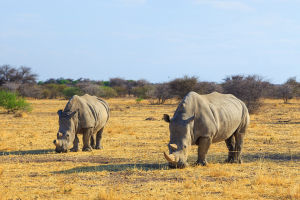Elephants, the largest land animals on Earth, are renowned for their intelligence, complex social structures, and remarkable physical features.
These majestic giants have captivated the human imagination for centuries, and their behaviours and characteristics offer a glimpse into their extraordinary lives.
Here’s a look at some key aspects of elephants, from their anatomy to their social behaviours.
1. Physical Characteristics
Elephants are distinguished by their impressive size and unique features. They are put into three different categories: the African bush elephant, the African forest elephant, and the Asian elephant. African bush elephants are the largest, with males reaching up to 13 feet in height and weighing as much as 14,000 pounds. African forest elephants are smaller, while Asian elephants are also smaller than their African counterparts but still substantial in size.
One of the most iconic features of elephants is their trunks, which are elongated noses used for a variety of purposes. An elephant’s trunk contains around 40,000 muscles and is incredibly versatile, allowing them to pick up objects, communicate, and even snorkel while drinking water. Elephants also have large ears, which help regulate their body temperature by dissipating heat.
2. Social Structure and Behavior
Elephants are deeply social creatures, known for their intricate family dynamics. They live in matriarchal herds led by the oldest female, known as the matriarch. This female guides the herd, which typically consists of her daughters, their offspring, and sometimes other related females. Males usually leave the herd upon reaching maturity and may live solitary lives or form loose bachelor groups.
Communication among elephants is sophisticated and varied. They use vocalizations, body language, and even ground vibrations to communicate. Elephants are famous for their low, resonant calls that can carry over great distances. Their ability to sense vibrations through the ground helps them detect distant thunderstorms or approaching predators.
3. Diet and Habitat
Elephants are herbivores, consuming a vast amount of vegetation daily. Their diet includes grasses, fruits, bark, and leaves. An adult elephant can eat up to 300 pounds of food in a single day. They play a crucial role in their ecosystems by helping to maintain the balance of vegetation and creating clearings in forests.
Their habitats vary from savannas and forests in Africa to grasslands and tropical forests in Asia. Unfortunately, elephants face numerous threats, including habitat loss and poaching for their ivory. Conservation efforts are critical to ensuring the survival of these magnificent creatures.
4. Conservation Efforts
Conserving elephant populations requires addressing both habitat preservation and anti-poaching measures. Various organizations work tirelessly to protect elephants, support their habitats, and combat illegal ivory trade. Awareness and education are essential in fostering global support for elephant conservation.
In conclusion, elephants are remarkable animals with intricate social structures, impressive physical attributes, and vital ecological roles. By understanding and supporting conservation efforts, we can help ensure that future generations continue to admire and benefit from these magnificent giants.
Lykkers, we hope you enjoyed learning more about these incredible giants! We’d love to hear your thoughts on elephants or if you have any fascinating facts or experiences to share. Drop your comments below or tag us on social media with your insights and photos. Let’s continue celebrating and supporting these magnificent creatures together!
Elephants Being Elephants | BBC Earth
Video by BBC EARTH


